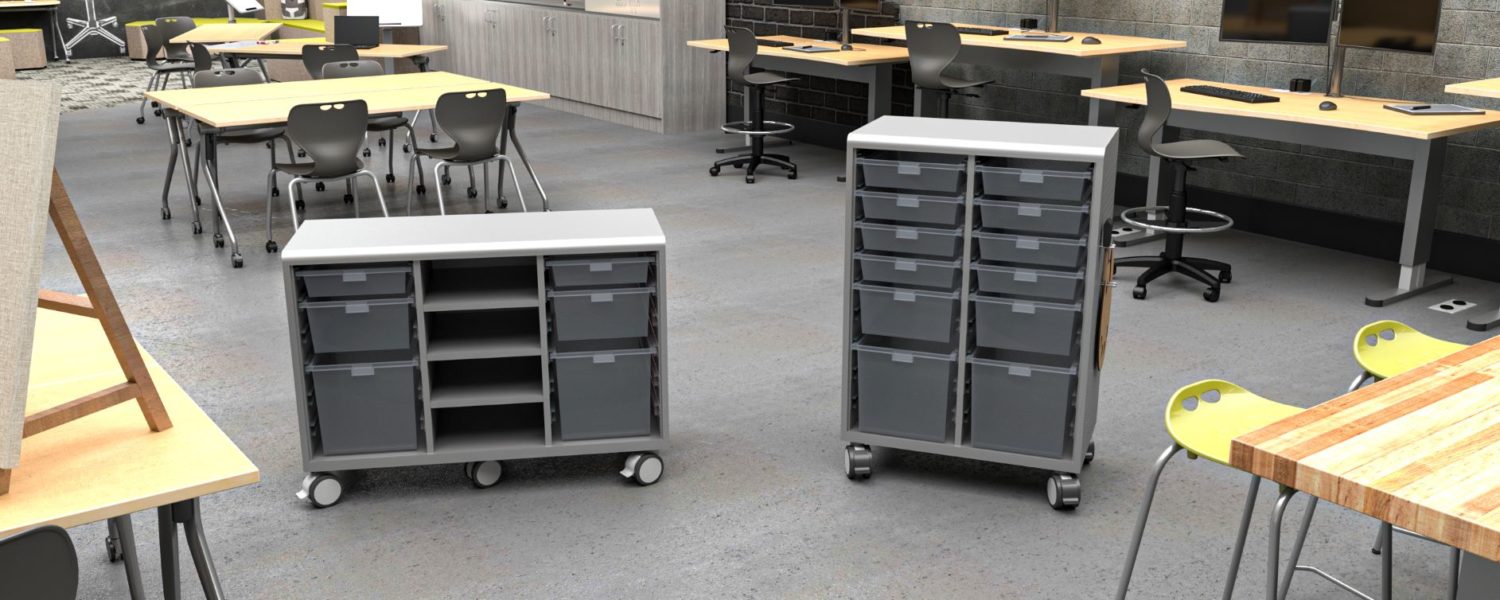By Dr. Christina Counts
Here are the steps that all schools should be taking to ensure safe, clean, healthy classrooms for the 2020-21 school year (and beyond).
As we move further into the Fall 2020 semester, schools are focused on creating healthy but functional learning spaces—all while keeping students and learning at the center of the conversation. Thanks to COVID-19, learning space design has quickly evolved into a discipline focused on creating healthy and functional learning spaces.
To ensure safe and healthy spaces throughout their physical campuses, school leaders are focusing on learning space design with an emphasis on furniture function, flexibility, and cleanability.
That means creating flexible learning spaces that can serve multiple purposes. Even the most adjustable spaces will be pushed to their limits as schools strive to keep students at a safe distance while still learning collaboratively in the classroom.
Here are 10 steps schools can take to ensure they’re meeting these requirements while also fostering learning, creativity, and collaboration in K-12:
- Use furniture that can be stacked and nested.
Stacking and nesting student desks and tables lets you open up additional space to arrange furniture with a 6-foot social-distancing bubble in mind. These mobile desks and tables can quickly shift to create space and continuously modify the classroom design based on learning needs and health guidelines.
- Switch to high-performance fabrics.
These fabrics offer significant benefits when it comes to cleaning and disinfecting furniture in your learning spaces. Some performance fabrics allow for cleaning with a bleach solution, while others contain antimicrobial additives that halt the growth of bacteria and fungi and help increase fabric durability.
- Install antimicrobial surfaces.
Because they allow you to create an environment that is uninhabitable by microorganisms, these surfaces will soon become the de facto standard for learning space tabletops. Antimicrobial surfaces prevent the growth and spread of germs—a must-have for the development of safe and healthy learning spaces.
- Use mobile space dividers.
Mobile whiteboards are a multifunctional learning space addition that provide visual brainstorming and workspaces. They also act as space dividers that help keep students at safe and healthy social distances. Easy to clean and disinfect, these space divider boards form flexible barriers between students and small groups and are easy to clean and disinfect.
- Make your furniture more mobile.
Flexible and mobile furniture pieces transform learning spaces to fit several purposes, including:
- Collaborative common spaces and extended learning spaces can transform to act as additional instructional space.
- Outdoor spaces can act as convertible learning spaces when weather permits.
- Mobile teacher stations can support teachers to travel to classrooms, keeping large numbers of students from moving throughout the facility at the same time.
- Replace all chairs that have arms.
Fewer touch points make for a healthier learning space by minimizing the contact students have with germs on furniture surfaces. Armless student chairs lower the number of touch points in a classroom and allow for easier and quicker cleaning and disinfecting.
- Provide individual student storage space.
The days when students could toss their backpacks onto a pile or borrow items from one another are gone (at least for now). The CDC recommends that each child’s belongings be kept separate from others and in individually labeled containers or cubbies. Mobile storage is a functional solution that provides organization and isolation of students’ personal items and school materials throughout the school day.
- Promote “safe” collaboration among students.
The physical classroom provides great potential for collaboration between students. This is something that’s difficult to replicate in the remote world. Learning spaces should be designed to allow students to keep a safe distance, while also being able to connect and collaborate. Multi-use furniture pieces facilitate highly functional classrooms and common spaces where students can work at a safe distance from others. For example, flexible furniture can be reconfigured to support direct instruction and lecture style instructional delivery with the CDC recommended 6-foot social distancing.
- Move the desks and furniture around.
Shift the layout so that students can still have eye contact while contributing to class discussions. Flexible furniture provides the functionality to prevent the old school cemetery effect of rows of desks and students staring at the back of their peers’ heads. Mobile furniture can be utilized in common spaces outside the classroom to support additional learning spaces. Collaborative groups can still have conversations in small groups and actively work together using online collaborative tools (e.g., Google docs) while maintaining healthy distances.
- Put health and cleanliness first.
Keeping learning spaces clean and disinfected has become a key priority for teachers, administrators, and staff. Surface materials play an important role in cleanability, with vinyl, laminate, and performance fabrics being some of the most durable and easy-to-clean materials for high-touch learning spaces. Healthy learning spaces can also be maintained by separating collaborative and individual work areas, allowing for cleaning and disinfection of one area while students are using the other.
Reducing Stress Points
Even without knowing exactly what the future holds, it’s still possible to take the proper precautions to prepare for healthy and functional learning spaces. Stacking, nesting, mobility, and cleanability are the essential considerations for future-ready learning spaces.
Using the tips outlined in this article, students and educators can focus on what’s most important in the classroom––academics and building relationships with their peers––rather than stressing out about their safety and health.
Schools will be different, but with the right learning space design and health safety plan, students, faculty, and staff can maintain a positive and enriching school experience during COVID and beyond.
Dr. Christina Counts is vice president of strategy and development for MiEN Environments, a proven leader with a successful background in transforming learning spaces to modern engaging learning environments, www.miencompany.com.










